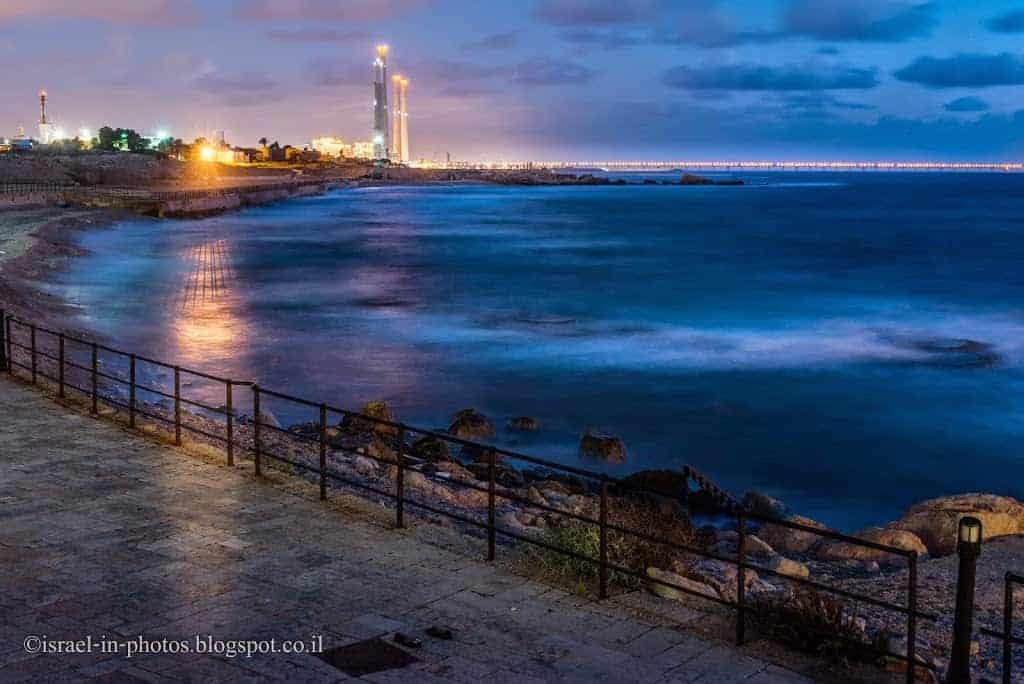Bet Gemal Monastery – Visitors Guide
Bet Gemal Monastery is a Catholic monastery near Beit Shemesh, and inside, you can visit the church of Saint Stephen.
Table of Contents
Map
Bet Gemal Monastery is located near Beit Shemesh. And the easiest way to reach it is by entering its name into Waze.
Directions for drivers: Link to Waze and Link to Google Maps
Directions for public transport: Link to Moovit
Interactive map of the area:
Parking
There is free parking near the entrance.
Opening Hours
Monday – Saturday: 08:30 – 11:30 and 13:30 – 16:30
Sunday: closed
Note: the monastery is closed during Christian holidays. See additional details in the photos below.


Entrance Fee
Free.
Basic Info
Beit Jimal, Beit el Jemâl, meaning “The house of the camel,” is a Catholic monastery run by Salesian priests and brothers near Beit Shemesh, Israel. The Christian tradition identifies the site with the Roman- and Byzantine-era Jewish village of Caphargamala and believes that a cave there is the tomb of Saint Stephen or to have conserved his relics. Therefore, alternative spelling and etymology for the name are Beit Gemal or Beit Gamal – the House of Rabban Gamaliel the Elder.
Source: Wikipedia
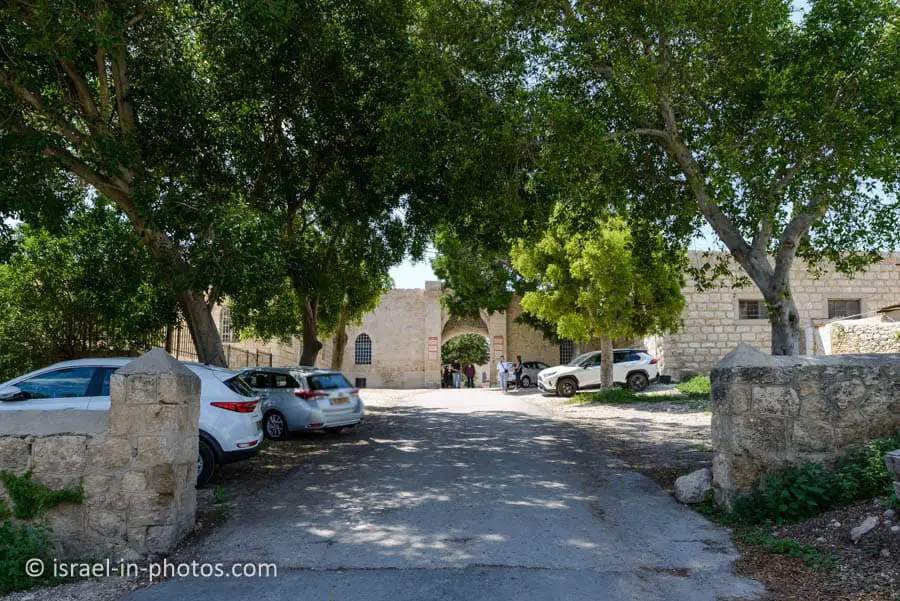
What Can Be Found in the Compound?
In the compound, you can find the following:
- Shop – You can find handmade products in the store, including wine, honey, and olive oil. The store is small. And it is much smaller than the similar store at Latrun Monastery.
- Concert Hall – similar to Latrun Monastery, there is a hall for concerts.
- Ancient mosaics and Saint Stephen’s modern church.

You will see the small store in the passage to your right as you enter. During our visit, they accepted cash only. Further ahead, you can see the main building and the meteorological station. Here are several photos:



Oldest Meteorological Station in Israel
This station was established in 1919 by the Italian Salesian Monastery. This is the oldest weather station in Israel that has been operating continuously in exactly the same location
Today the Beit Gimal weather station is part of the station network of the Israeli Meteorological Service.
The meteorological observations are carried out with great care by the monastery.
Source: sign

Restrooms
At the meteorological station, turn right and continue walking around the main building. You will see the entrance to the concert hall near the basketball stadium. And on the other side of the building, you can find restrooms.

In the following photo, you can see the restrooms to the left and the church further ahead.

Mosaic
The modern Saint Stephen’s church is in the same spot as the fifth-century Byzantine church. The mosaics of the older church are attached to the outer walls. Here are several photos:



Saint Stephen’s Church
This church, dedicated to Saint Stephen, the first Christian martyr, was built in 1930 on the same spot and in the same architectural style as a fifth-century Byzantine church, whose mosaics (attached to the walls in front of you) were discovered in 1916. The archaeologists who carried out the excavations of the site thought they had found the burial place of Saint Stephen, Nicodemus, Rabbi Gamaliel, and his son Abibos, mentioned by the Greek priest Lucian in his famous letter (415 CE), in which he announces this discovery to the whole Church. In this letter, Lucian describes how Rabbi Gamliel, Saul’s (Saint Paul’s) teacher, mentioned in the Acts of the Apostles as a moderate person and in favor of the Christians (cf. Ac 5:34-41), appeared to him during three nights and urged him to search the tomb of the four people mentioned above and also showed him the spot of the burial place.
According to the indications given by Gamliel, Lucian searched and found the tomb with their remains. When John, the Bishop of Haelia (i.e., Jerusalem), knew of this discovery, he ordered them to bring their remains to the main church in Jerusalem, the one on Mount Zion ( Hagia Sion, the church of the Cenacle or The Last Supper). To comfort Lucian of this painful deprivation, on the spot of the burial place, he built a monument (a martyrium) in honor of Saint Stephen with some tiny remains (relics) of the Protomartyr in it.
In this letter, Lucian wrote that he had had visions (or dreams) while sleeping near the church of Kaphargamala, a village, according to his own words, about thirty km (22 miles) distant from Jerusalem. For some scholars, Bet Gemal, by which this site has been known for many centuries and is still known today, is nothing else than the transformation of the original name of the site Kaphargamala, from Kphar Gamaliel (or Gamliel), being it the property of Rabban Gamliel (Ha Kishon or Ha Zaken, the First or the Old), the famous Rabbi Gamliel, as he declares to be in the letter to Lucian. According to this letter and other Christian traditions, Gamliel gave Saint Stephen’s body, which had been abandoned in Jerusalem, near Gethsemane, after being stoned to death, a worthy burial place in his estate of Kaphargamala. Once he and his son Abibos became Christians (according to Christian tradition), he ordered that they, too, once dead, be buried near Saint Stephen’s tomb. Gamliel gave shelter and, later on, a tomb to his nephew Nicodemus, a secret disciple of Jesus (cf. Jn 3:1-21), who had been expelled from the Sanhedrin for being a follower of Jesus.
The ultimate proof, or rather, the evidence that Bet Gemal corresponds to Kaphargamala, dates back to 1999. In the autumn of that year, archaeological excavations were carried out on the first slope (the place is called Jiljil) that we see on the left-hand side after entering the land of Bet Gemal from the main road. The late Salesian Polish priest Andrej Strus, the ultimate expert in the history of Bet Gemal, conducted the excavations. The structure of a round building was found and unearthed. Near that structure, a stone lintel with a tabula ansata (you can see it in your right hand while entering the church) was found. The tabula ansata (Latin for a tablet with handles to write) indicates that something has been written (hewn or carved). However, today you cannot decipher the writing with your naked eye since this lintel with the tabula ansata has been exposed for so many centuries to bad weather. Only the expertise of an epigraphist, Fr. Emile Puech of the Dominican Ecole Biblique in Jerusalem, could solve this riddle. On this tabula ansata, three Greek words are “written”:
THE PLACE OF THE RELICS OF STEPHEN THE FIRST MARTYR
This discovery ends all past and future speculations and attempts to identify other “competing “sites as Kaphargamala (Saint Stephen’s first burial place) other than Bet Gemal. A question. What happened to the remains of the four people (Stephen, Nicodemus, Gamliel, and his son Abibos) after they had been moved from Kaphargamala to Hagia Sion in Jerusalem? The remains of Stephen were shared by several churches in the ancient Christian World, especially in Jerusalem, Constantinople, and Rome, while the remains of the other three remained in Hagia Sion until the Crusader Period. The first Patriarch of the Latin Kingdom of the Crusaders in Jerusalem was Daiberto from Pisa in Italy. When he went back to Italy (1104), he thought it appropriate to take with him the remains of the three above-mentioned people (Gamliel, Abibos, and Nicodemus) to his town. Today if you visit the Duomo (church) of Pisa (near the leaning tower!), above the fourth altar, at your right hand after the entrance, you will see a marble urn containing their remains, with the names of Gamliel, Abibos, and Nicodemus.
The construction of the present church in Bet Gemal was carried out in 1930 by the Salesian Fathers of this Monastery under the supervision of the Swiss architect and archaeologist Maurizio Gisler, a Benedictine Monk from the Mount Zion Abbey (Dormitio) in Jerusalem. The great paintings illustrating Saint Stephen’s life and martyrdom and the painting of the twelve Apostles are the work of Fra Luigi Poggi, a Maltese Carmelite brother of the Convent of Stella Mans in Haifa. The painting of the ceiling, the apse, the two lateral niches (Don Bosco, the founder of the Salesians and Saint Stephen), the apparent mosaics on the walls, and the decoration of the entire Crypt is the work of the German artist Emile Ritz. The four stained glass windows at the floor level in the church describe the most important moments in the life of Jesus (His Birth in Bethlehem, His Baptism in the river Jordan, His Crucifixion and Death on Calvary, His Resurrection, and Ascension into heaven in Jerusalem) is a recent work (2003-2004) by the artist Vladimir Berezovski. He was helped by the painter Vladimir Golonischen and under the artistic supervision of the Italian Salesian brother Sante Tombolato. The drawing of the fifth stained glass window (on the rear wall of the church), which illustrates the Transfiguration of Jesus on Mount Tabor with the biblical figures of Moses (representing the Torah) and Elijah (representing the prophets), is the work of the Italian artist and architect Graziano Romaldi from Turin (Italy). The same artist designed the stained glass windows in the Hall of the Concerts. In the year 2000, the Israeli artist Ygael Tumarkin created and donated to Bet Gemal the artistic expression representing Saint Stephen’s Martyrdom, which now decorates the patio of the church. In the underground church (Crypt), there is the tomb of a Salesian lay brother Sima’an Sruji from Nazareth (1877-1943), considered a saint by all those who knew him. He spent almost his entire life in Bet Gemal, dividing his duties between the only flour mill in the area and the school clinic. In this very simple clinic, he showed such a sensitive charity and love in caring for his patients, mostly Muslim peasants, that they considered him a man of God, a saint.
Some short distance South East of Bet Gemal, on the road leading to Ramat Bet Shemesh A, the ruins of an ancient monastery appear on the left side. The ruins are called “DEIR NEBI BOULOS — THE MONASTERY OF THE PROPHET PAUL.” It is evident that the ancient name was “THE MONASTERY OF SAINT PAUL,” which became, after the Muslim invasion, “Prophet Paul.” The mention of SAINT PAUL in the vicinity of Bet Gemal is additional proof that Kaphargamala (Bet Gemal) belonged to Rabban Gamliel and Saul of Tarsus ( later Paul the Apostle), as Gamliel’s disciple, had to follow him whenever his teacher moved from Jerusalem to his estate here, since, according to Jewish tradition, the disciple had to follow his teacher everywhere.
Source: sign
And here are several photos of the interior:


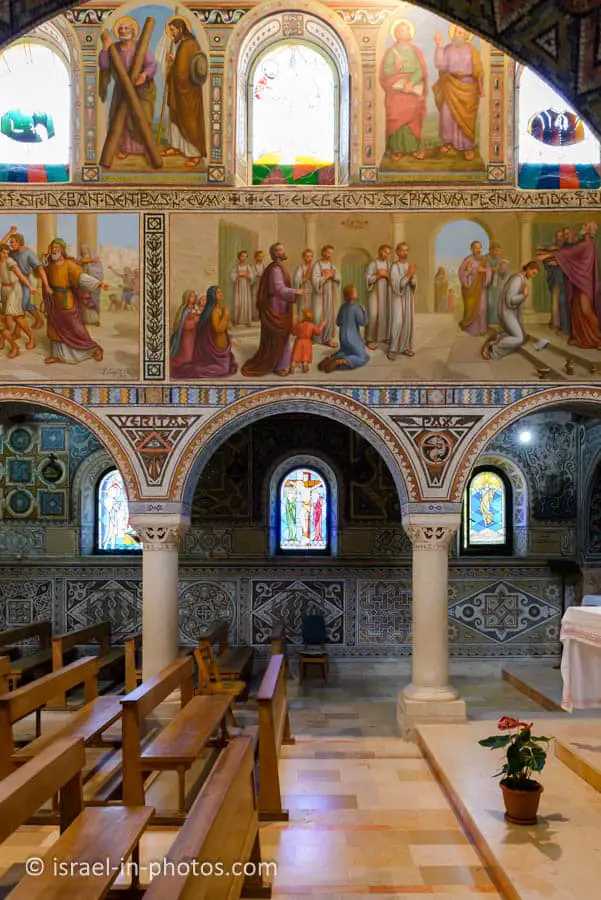
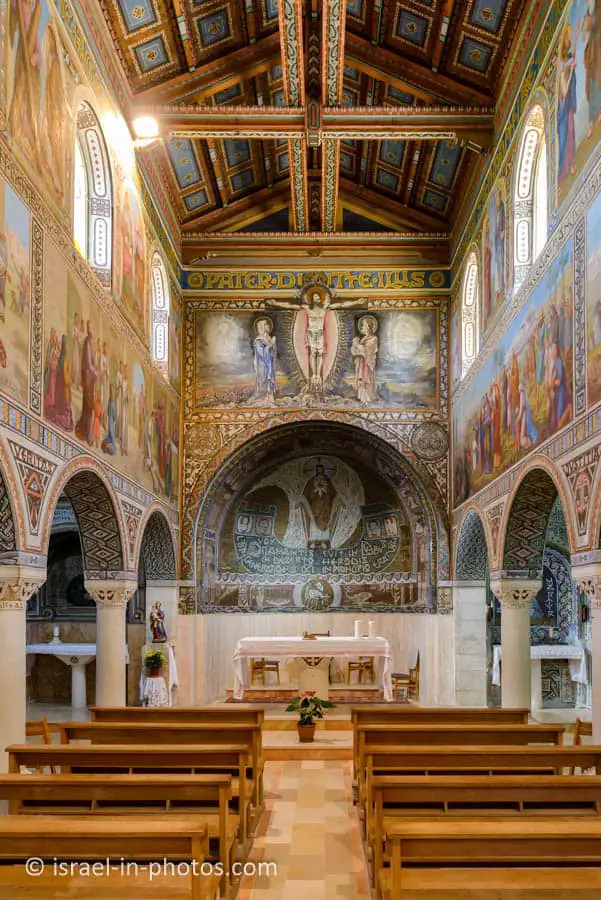

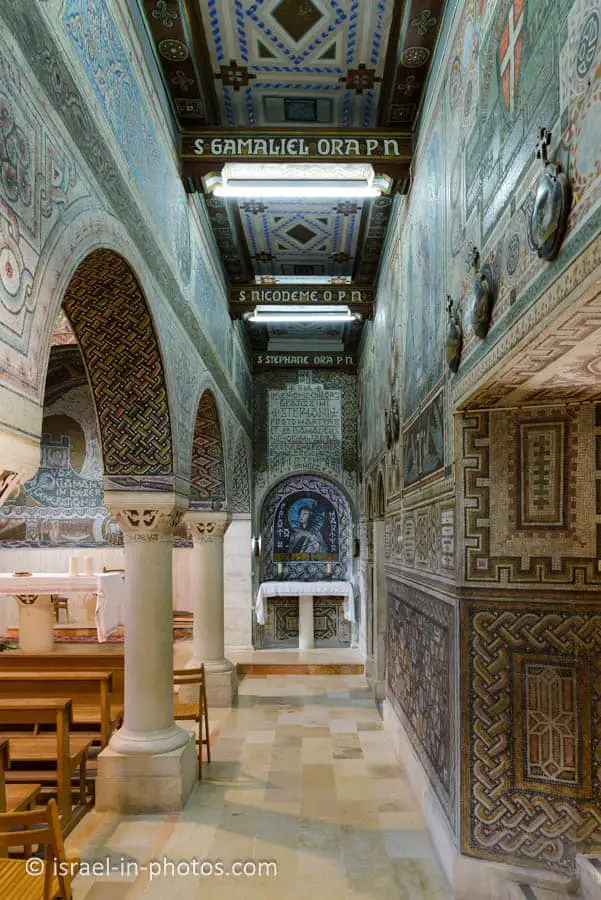

Summary
Bet Gemal Monastery is a small hidden gem. But since the visit will probably be short (0.5 – 1 hour), you can combine it with other nearby points of interest. You can find all of them on the interactive map at the top of this page.
Have you ever been to Bet Gemal Monastery? Tell us about your experience in the comments below.
That’s all for today, and I’ll see you in future travels!
Stay Tuned!
Additional Resources
Here are several resources that I created to help travelers:- Trip Planner with Attractions and Itineraries is the page that will help you create your perfect travel route.
- What is the Best Time to visit Israel? To answer this question, we will consider the weather, prices, holidays, festivals, and more.
- Information and Tips for Tourists to Israel will answer the most common questions tourists have about Israel (including safety, passports, weather, currency, tipping, electricity, and much more).
- Israel National Parks and Nature Reserves include a complete list, top ten, map, tickets (Israel Pass, Matmon, combo), and campsites.
- If you are looking for things to do, here are the pages for Jerusalem, Tel Aviv, Haifa, Sea Of Galilee, Akko (Acre), Eilat, Nazareth, Safed (Tzfat), and Makhtesh Ramon.





